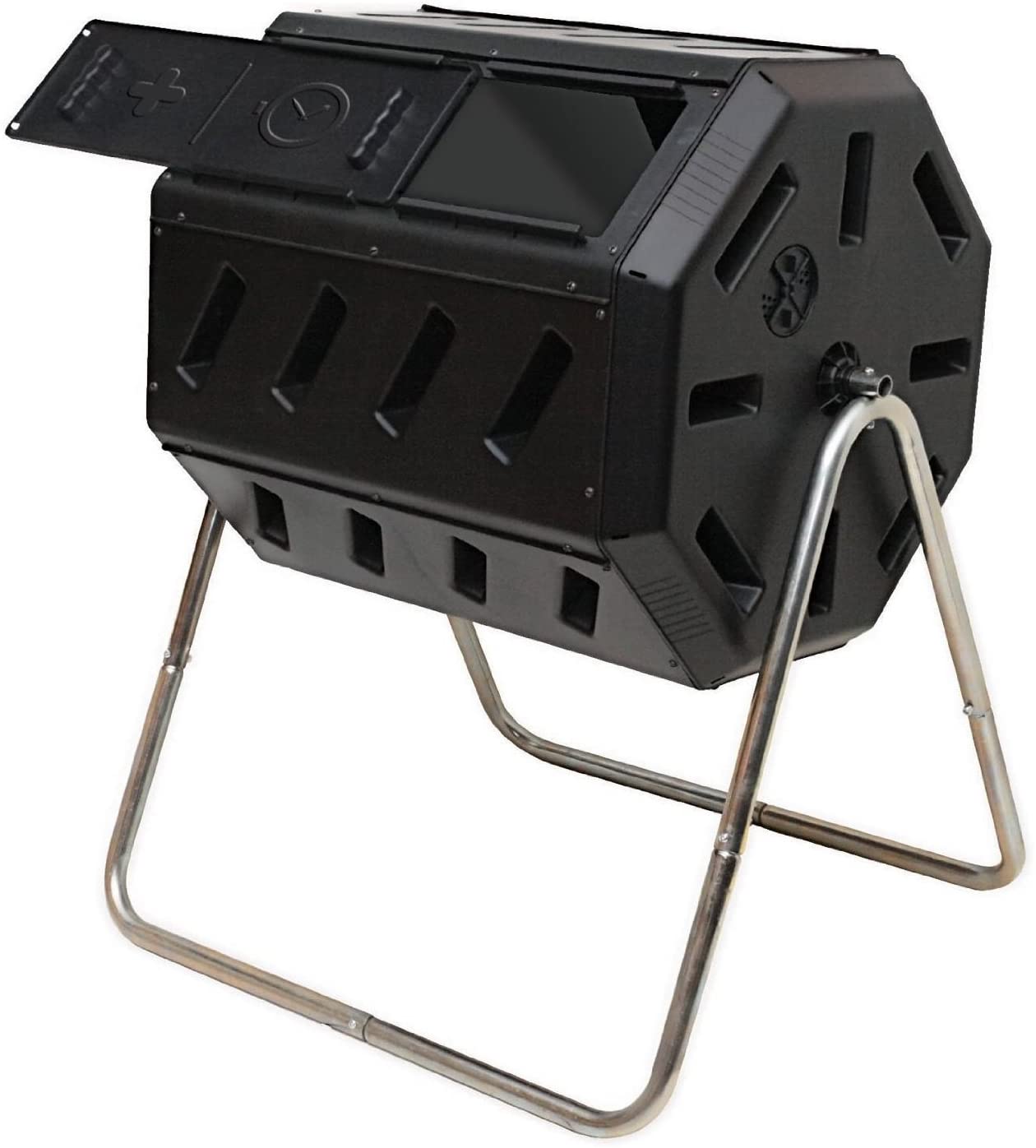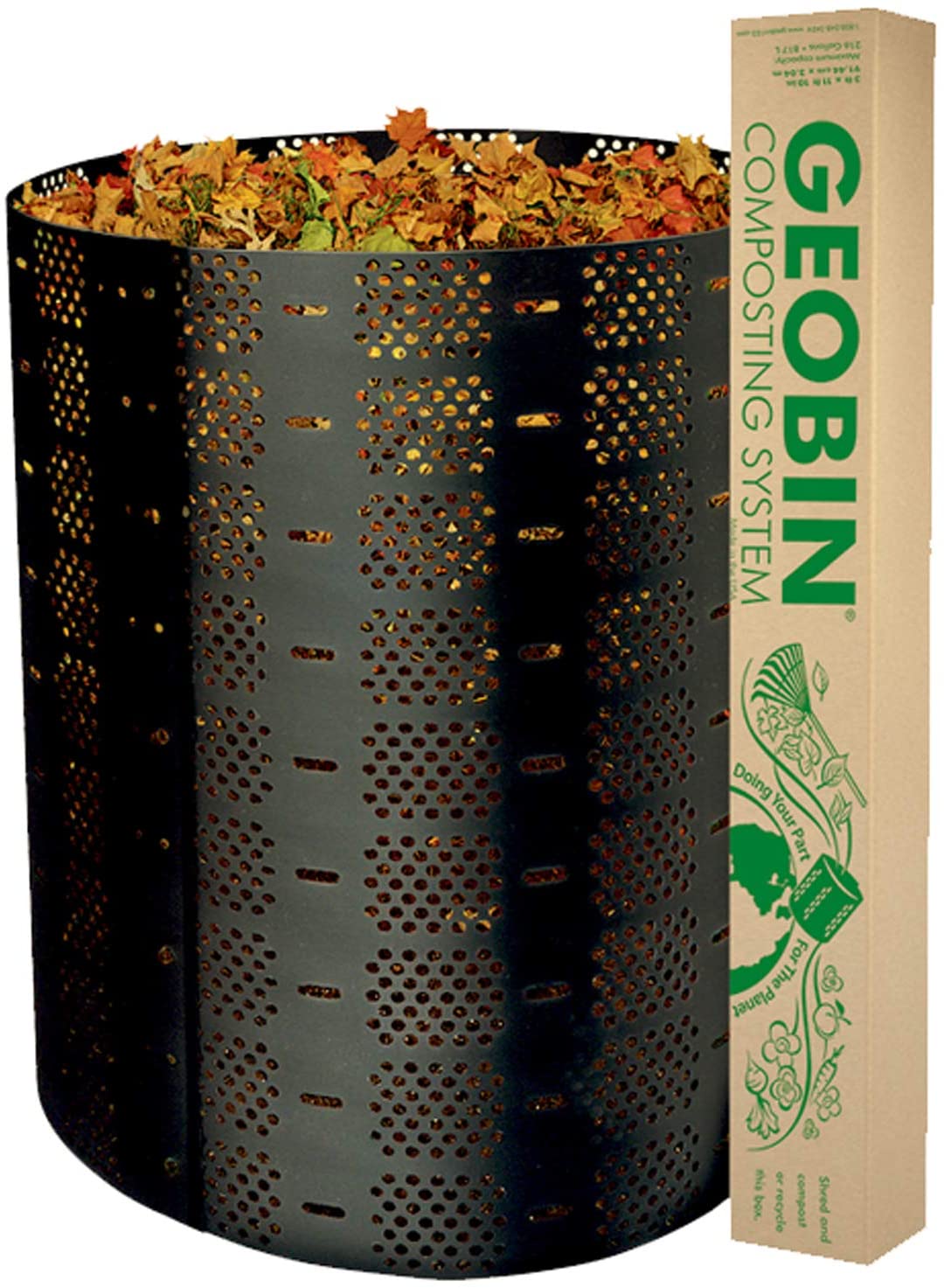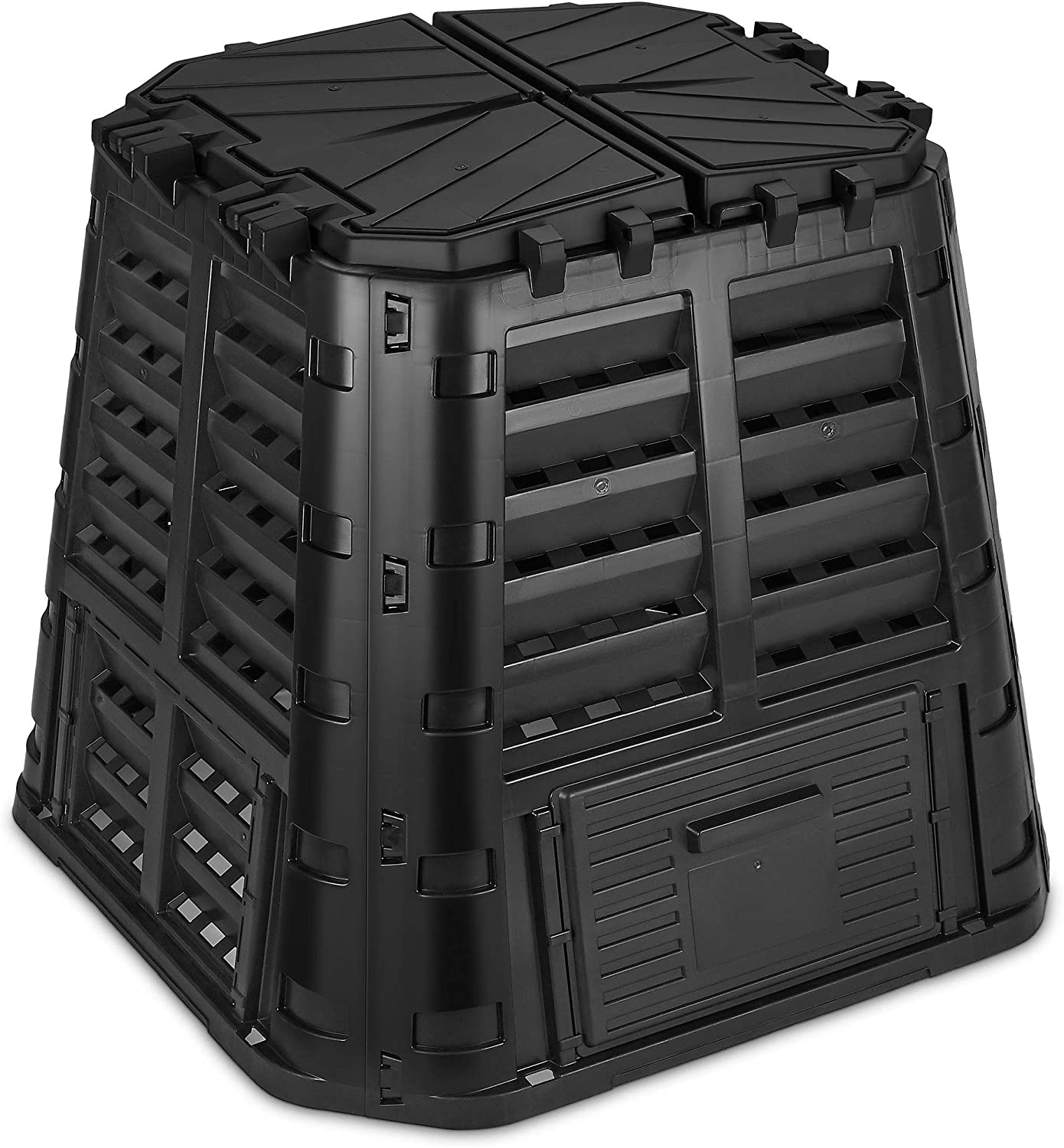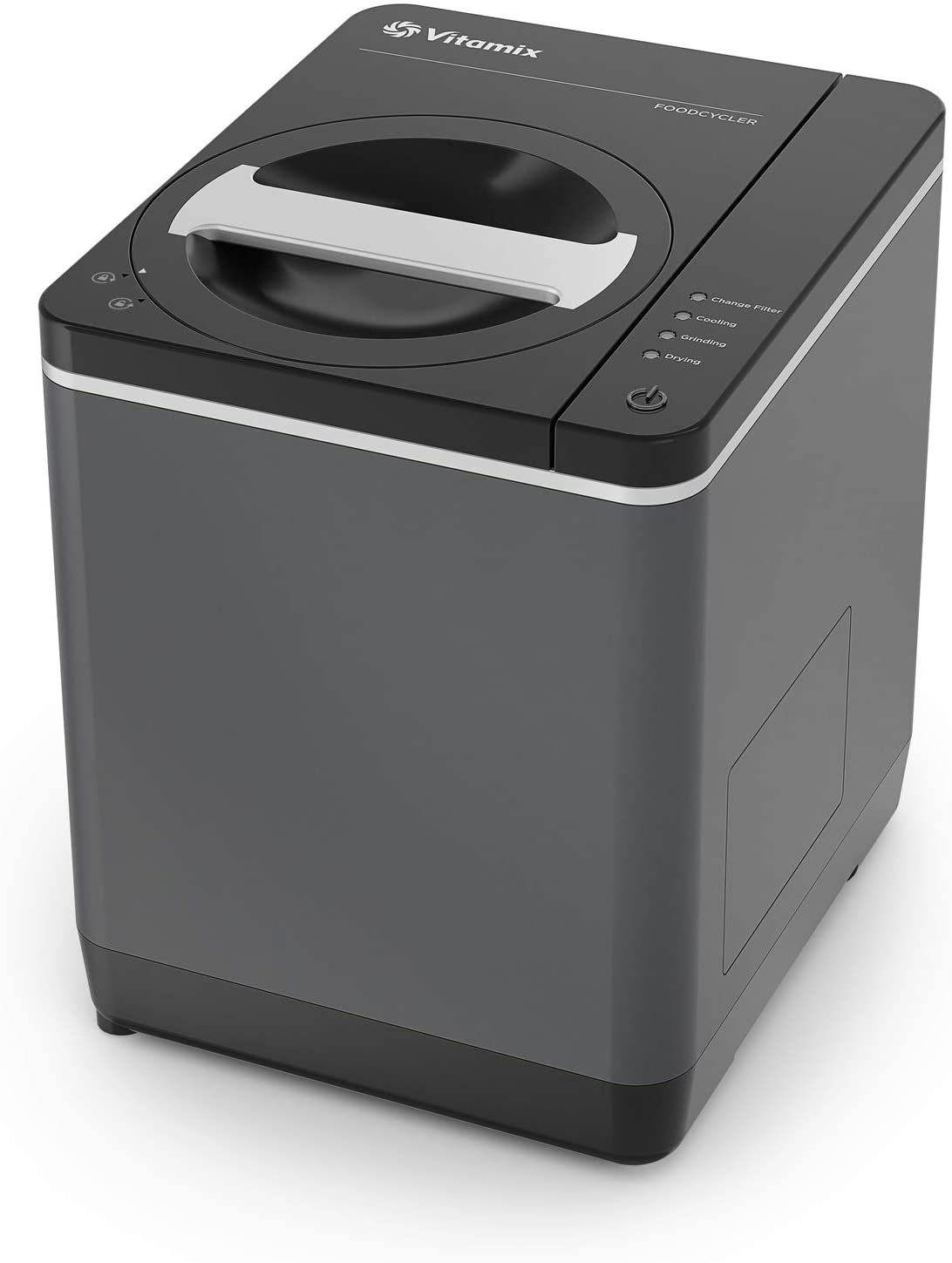The Best Composters for Your Money
Compost can do wonders for your plants and garden. This organic fertilizer is like a multivitamin that, among other benefits, enriches the soil, encourages healthy growth and strong roots and helps ward off plant diseases and pests.
Composting is beneficial for the environment, too. According to the U.S. Environmental Protection Agency (EPA), food scraps and yard waste make up more than 30% of what Americans throw away. By composting, you’re helping reduce food waste, methane emissions and your carbon footprint.
Composting happens naturally as organic materials decompose, but this process can take a long time — and possibly consist of an unsightly (and sometimes smelly) pile in a corner of your yard. But there are many compost bins you can buy that make it easy to create compost quicker, and without the rotting food smell. These bins are typically made with dark-colored recycled plastic that helps absorb heat and regulate moisture and oxygen. This helps develop the bacteria needed to break down organic material faster.
Compost bins are relatively inexpensive as well. You can expect to pay anywhere from $30 for the smaller countertop and under-the-sink composters, to more than $200 for larger capacity outdoor bins. Plenty of very good composters, with ample capacities, are available for around $80 to $100.
Types of composters
There are three main types of composters: stationary, tumbling and worm composters.
Stationary composters are well suited for homeowners with plenty of backyard space. These are often plastic containers that feature either an airtight lid or a lidless open design. Most stationary bins have access points near the bottom, so you can harvest the compost when it's ready to add to the garden, and multiple ventilation holes for proper aeration. Stationary composters are usually bigger than tumblers, but you’ll periodically need to mix the compost pile yourself with a pitchfork or other garden tool.
Tumbling composters, on the other hand, are sealed barrels with a crank or rotation system that let you mix the composting material without much effort (a simple push will suffice, in most cases). This turning mechanism helps accelerate decomposition and makes the mixing process a piece of cake, which is why they’re often considered more efficient than stationary composters. Additionally, all tumblers have a stand that keeps the bin elevated from the ground, hopefully high enough to keep pests at bay.
Lastly, worm composters, also known as vermicomposters or wormeries, use redworms (red wigglers, to be more specific) to break down food and garden waste. Because worms can eat half their weight in food per day, they can turn food scraps into a nutrient-rich, fertile compost much faster and efficiently. This type of composter is odorless when properly maintained and doesn’t occupy much space, meaning it can be kept indoors. This makes it a good option for porches or a nook in your kitchen, and it works well for people living in apartments or condos .
There are also some niche electric composters like the Vitamix Foodcycler (reviewed below) that help you dehydrate and grind food waste, which you can later add directly to your soil or to your outdoors composting bin for further decomposition.
What can I compost?
A good compost needs an equal mix of nitrogen- and carbon-rich materials, along with proper moisture. Nitrogen-rich materials, also known as “greens,” include waste such as grass clippings, fruit peelings and coffee grounds. Carbon-rich waste, or “browns,” comes from items such as cardboard, paper bags, twigs and straw.
Other compostable materials you can use, include:
• Dead leaves
• Tea bags
• Leather
• Eggshells
• Sawdust
• Natural fibers, such as cotton and wool
• Egg boxes
• Hedge trimmings
You shouldn’t add pet feces, cooked food, diseased plants, raw meat, oil, grease, color printed paper or citrus peels to compost piles. These can either contaminate your compost, cause bad smells, attract pests or even slow down decomposition.
Composter buying guide
Once you’ve settled on the type of composter that would work best for you, consider the following factors as you browse specific models:
• Capacity. Compost bins come in a wide range of capacities and sizes, from 1 gallon to over 200 gallons. You should ask yourself how much compost you want to prepare and how quickly, taking into account how much compostable waste your household produces and how much compost you can realistically use for your plants and garden.
• Material. Most commercial composters are made from heavy-duty recycled plastic, typically Polypropylene (also known as PP or type 5 plastic). This type of plastic is durable and resistant to heat and most weather conditions. It’s also possible to find some composters made of other materials, like wood or metals. Regardless of the material you choose, make sure it’s sturdy and weather-resistant.
• Location. Think about where you want to keep the compost bin. Indoors or outdoors? Stationary bins are a good choice if you’re going to be composting large amounts of yard and garden waste. Tumblers may be easier to move to different areas, if needed. Vermicomposters and countertop bins, on the other hand, can be very useful to compost indoors.
Best composters
1. Best overall: Vivosun Tumbling Composter
Material: BPA-free PP plastic | Capacity: 43 gal. | Size: 26.25” x 23.6” x 36.5” | Weight: 26.4 lbs.
The Vivosun is a tumbling composter made of galvanized steel and high-quality BPA-free plastic that can hold up to 43 gallons — a fairly common capacity that seems to work well for most tumblers.
The Vivosun features two compartments, each with a sliding door (available in black or orange). This design allows you to compost a batch on one side while you start a new one on the other. As a nice bonus, a pair of garden gloves are included with the purchase.
Tumbling composters like the Vivosun are designed to simplify the mixing process. You just need to place the contents inside and use the rotation system to spin the bin a few times a week. This is largely considered a more efficient process compared to open-design composting because it can help accelerate decomposition.
Before buying anything, take note that the Vivosun needs assembly, and some reviewers say the process is laborious. (Some owners report it took them over an hour.) Another consideration is that the door openings are somewhat small for large piles of yard waste, so it might not be the best choice if you live in a rural area or have a large property with trees. However, for city dwellers or homes with small to medium-sized gardens or yards, the Vivosun is a great choice.
2. Editor’s pick: FCMP IM4000 Dual Chamber Tumbling Composter
Material: BPA free PP plastic | Capacity: 37 gal. | Size: 28” x 36” x 30” | Weight: 28 lbs.
Much like the Vivosun above, the FCMP IM4000 is a tumbling model that offers the benefit of mixing your compost with just a light push; however, its capacity is slightly more modest at 37 gallons.
The composter is sturdily built from UV-inhibited recycled polypropylene (or PP) plastic and features a two-chamber design, which lets you produce two separate compost batches. Although, if you prefer a single chamber barrel to place all your compost, you can opt not to install the partition.
The IM4000 has a two-foot high metal frame and a sliding door. This makes it ideal for composting food and garden waste without having to worry about pests.
Overall, the FCMP IM4000 is easy to use and a good choice for gardeners who have limited space in their yard. It costs about the same as the Vivosun Tumbling Composter, which typically sells for around $85.
3. Best for low prices: Geobin Compost Bin
Material: Plastic | Capacity: 216 gal. | Size: 36.5” x 5” x 5” | Weight: 7 lbs.
This $40 open composter has an impressive capacity of 216 gallons, enough for large yards and gardens with plenty of compostable material. The Geobin compost bin is made from a flexible plastic material that can be adjusted to up to four feet in diameter.
It’s very easy and straightforward to assemble. Once you choose the size that’s best for your garden, you just clip it together on the sides with the included closure keys. Then you're good to start filling it up.
The plastic mesh provides ventilation and moisture to hasten decomposition while the open design allows you to mix the compost pile when needed. However, if you’re planning to compost food scraps, this design may be a drawback because it leaves your compost pile exposed to rodents, vermin, and bigger animals, like bears and deers. This means that the Geobin — and other open bins like it — are best suited for items like leaves, hedge trimmings, grass clippings, paper, cardboard and other non-food compostable materials.
The Geobin is fairly lightweight; in fact, some reviewers claim it can tip over very easily if you don’t secure it. So you may want to buy some plastic stakes or landscaping staples to give it more stability, even though according to the manufacturer they’re not required.
4. Best for low prices runner-up: Redmon 8000 Compost Bin
Material: PP plastic | Capacity: 65 gal. | Size: 26” x 26” x 30.75” | Weight: 15 lbs.
The 65-gallon Redmon 8000 Compost Bin is an outdoor composter made from heavy-duty, UV-resistant plastic, available at an affordable price of about $60. It consists of a snap-on top lid and four side doors that provide easy access to the compost material. It has multiple ventilation holes on the sides, which let the contents breathe and helps speed up the decomposition process.
The Redmon 8000 has an open bottom, which means that the compost has direct access to the soil below, unless you place the bin on a concrete floor, tarp or a similar surface. In most cases, access to the soil is beneficial because it allows worms to get in. Nonetheless, it may also be a drawback considering that rodents and similar pests might also find a way into the compost, especially if there are food scraps inside.
Another potential drawback is that, like the Geobin, the Redmon 8000 bin doesn’t include stakes to anchor it to the ground. Additionally, some customers complain the lid doesn't attach securely in its place causing it to be easily blown off by the wind.
5. Best stationary composter: D.F. Omer Garden Composter Bin
Material: BPA-Free PP plastic | Capacity: 110 gal. | Size: 32” x 32” x 5.5” | Weight: 19.36 lbs.
The D.F. Omer is a stationary composter with a tower design and a 110-gallon capacity.
It’s made of BPA-free black plastic that’s UV-inhibited to retard plastic degradation and is resistant to most weather conditions. The bin has a large opening on top, with padlock-ready doors. This allows you to easily load large portions of yard clippings and secure them properly, preventing the wind from opening it. There are two doors on the bottom that give easy access to the composted material whereas multiple narrow openings on the sides provide balanced aeration.
The D.F. Omer includes a set of four plastic stakes to anchor the bin to the ground. Another advantage is that the bin can be expanded up to 172 gallons, if you buy the D.F. Omer extension, although that does cost an additional $50.
One recurrent complaint among users is that you have to cut through the plastic to create the door opening at the bottom, a process that may be dangerous without the proper tools or experience.
Additionally, much like similar stationary composters, the D.F. Omer has an open bottom, meaning that some pests may be able to find their way in by digging under the walls.
6. Best electric composter: Vitamix FoodCycler FC-50
Material: Plastic | Capacity: 2 liters | Size: 12.6” x 11” x 14.2” | Weight: 27 lbs.
Food scraps can provide nutrients to your compost, but leaving food waste in compost bins can produce some strong smells and is likely to attract pests. A food recycler like the Vitamix FoodCycler FC-50 can take care of both of these issues.
About half the size of a microwave, this countertop “composter” uses heat and a grinder to dehydrate and crush food scraps, reducing it to a fertilizing mixture that can be added to your outdoor composter or directly to the soil.
The process is simple and odorless. You fill up the removable waste basket with compostable food scraps such as vegetables, fruit peels, eggshells or even meat and bones. The Vitamix FoodCycler grinds and processes the contents for a few hours (could be anywhere from four to eight, depending on what you toss inside), resulting in garden-ready compost.
The FoodCycler has an LED screen showing what’s happening inside, whether it’s dehydrating, grinding or cooling the contents. It also has a carbon filtration system, which helps eliminate odors and makes it perfect for indoor spaces.
Apart from the 2-liter capacity, which might be too small for large households, the Vitamix’s main drawback is its steep price. It costs around $400, plus the additional $120 you’re likely to spend on filter replacements annually since they need to be changed every three to four months.
Nonetheless, the FoodCycler may be a perfect choice for people who live in apartments and don’t have enough space to do traditional composting for their urban gardens.
7. Best countertop compost bin: OXO Good Grips Easy-Clean Compost Bin
Material: Plastic | Capacity: 1.75 gal. | Size: 10.83” x 8.07” x 8.46” | Weight: 1.8 lbs.
Strictly speaking, the OXO Good Grips Compost Bin isn’t a composter (scraps don’t stay in it long enough to become compost), but it’s a good option if you want a container to hold eggshells, coffee grounds, food scraps and the like before taking them to your outdoor composting bin.
With a 1.75-gallon capacity, it can be stored under the sink or on your countertop. It has a soft-seal lid that keeps odors locked in and a handle that allows you to easily transport it.
The OXO compost bin can be used with compost bags. Even if you don’t use bags, its interior walls are smooth enough to prevent buildup, which makes cleaning easy. Plus it’s dishwasher safe. The bin is available in two colors — white and gray — so you can choose the one that better matches your kitchen.
8. Best worm composter: Worm Factory 360
Material: Plastic | Capacity: Not specified | Size: 17.95” x 17.95” x 14.95” | Weight: 11 lbs.
If you don’t mind sharing your space with worms, take a look at the Worm Factory 360.
The Worm Factory 360 features pretty much everything you need to set up an appropriate environment for your worms, including four stacking trays (can be expanded up to six), a thermometer, a hand rake, a scraper and a base with a faucet to drain compost tea — a nutrient-rich liquid produced in wormeries that can be diluted in water and used as fertilizer.
You also get bedding materials and worm ladders so that worms can crawl to the upper trays easily. It doesn’t include the red wiggler worms that do all of the work, but you can buy them online or at a local garden supplier.
The process generally takes three months for the first tray and one month for the following trays. Additionally, it’s odorless, if you tend to the composter correctly.
Vermicomposters like the Worm Factory 360 are great for composting a wide variety of items, such as vegetables, fruits, paper, grains, cardboard and leaves. You should avoid, however, citrus items and meat and dairy products because they can be harmful to worms.
Do note that worms can’t tolerate extreme temperatures so they need to be kept between 40° and 80° Fahrenheit. In most cases, it is best to bring them indoors, especially during the summer or winter.
Another good choice is the VermiHut Plus. This vermicomposter typically retails for $100, and includes five stackable trays, a set of ant-trappers (to prevent ant invasions) and a coconut fiber mat to control moisture and minimize odors.
More from Money:
The Best Garbage Disposals for Your Money






